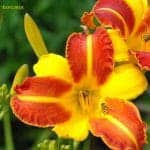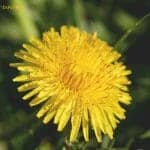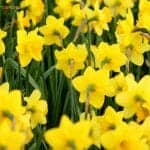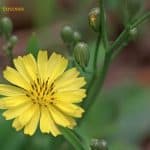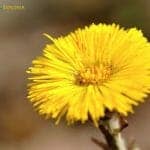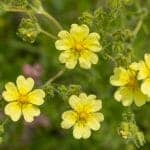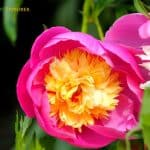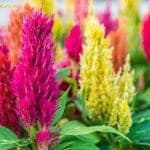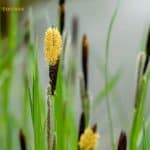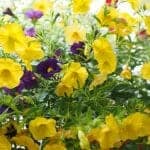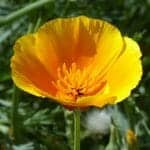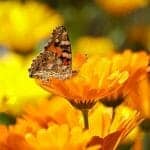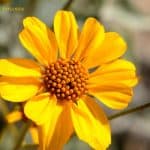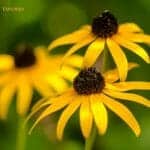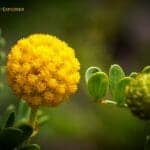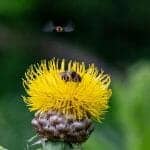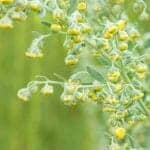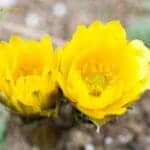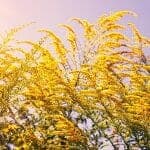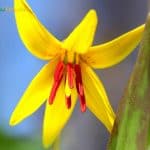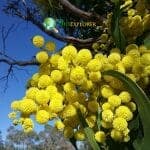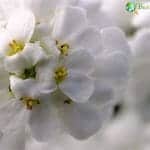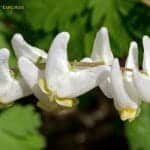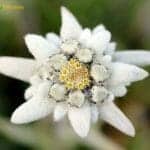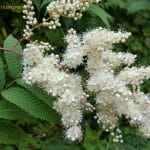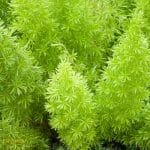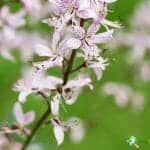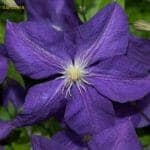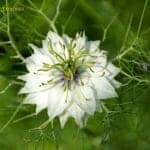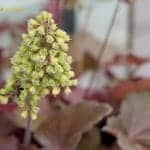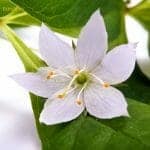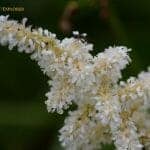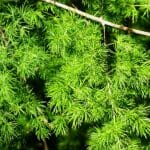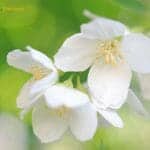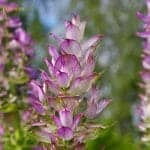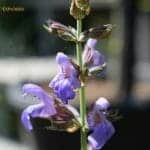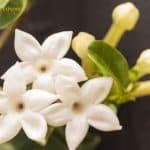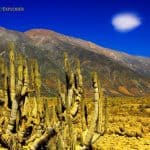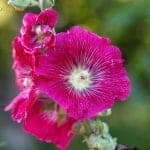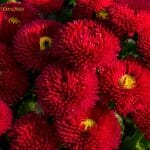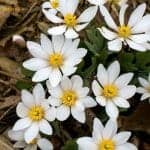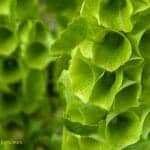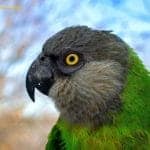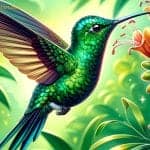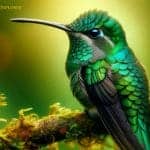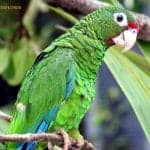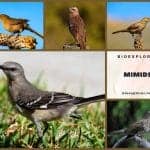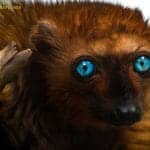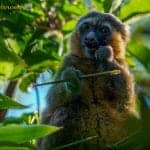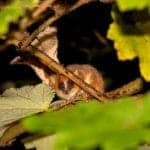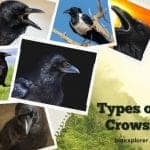p flower - search results
If you're not happy with the results, please do another search
Daylily
Known for its flowers that bloom in a single day, Daylily (Hemerocallis spp.) has always been a favorite of many flower growers and gardeners worldwide. These attractive reddish-yellow, orange, or yellow flowering plants are often called the perfect perennials for many reasons.
Dandelion
Although Dandelion (Taraxacum offinale) is native to Asia and Europe, it is so hardy that it grows in all 50 states of the United States and most provinces of Canada and Mexico. The yellow flowers are up to 2 inches wide and have small, modified leaves known as bracts at their base.
Daffodil
Daffodils herald spring and the awakening of nature with their trumpet-shaped blooms. They are among the few plant species that can successfully grow in snow. Daffodils are typically golden in color. However, there are new varieties of daffodils in pink, green, orange, yellow, and white.
Creeping Lettuce
The creeping lettuce is a flowering plant of the Asteraceae family. It is a widespread species in Japan. Being perennial, this plant grows to 0.2 meters by 0.5 meters. Ixeris stolonifera prefers moist soil and grows well in semi-shade or no shade.
Coltsfoot
Coltsfoot (Tussilago farfara) is a perennial herb in the Asteraceae (sunflower) family native to North Africa, Europe, and parts of Asia. Coltsfoot is the only recognized species in the Tussilago genus. The bright yellow flowers appear in early spring before the leaves appear.
Cinquefoil
The Cinquefoil, also known as widdy, golden hardhack, FiveFingers, and yellow rose, is among the most widely cultivated landscape shrubs. The saucer-shaped flowers are available in shades of red, orange, pink, yellow, or white.
Chinese Peony
Paeonia lactiflora is a flowering plant that can grow 20-28 inches tall. The Chinese Peony is a perennial herb of the family Paeoniaceae. Peony is named after Paeon, the Greek god of medicine and healing.
Celosia
The great diversity of Celosia in tropical Africa indicates an origin in this region. Celosia includes around 50 species. Few flowers are as showy as Celosia.Celosia is characterized by its purpleor bright redflowers.
Carex
Carex is a large genus of over 2,000 species of herbaceous plants in the Cyperaceae family. All Carex species have cool seasons and grow most actively in spring and fall. Carex flowers bloom in yellow, red, brown, and green.
Calibrachoa
Calibrachoa is sometimes seen adorning cascading planters or hanging baskets and other containers, a hardy, and delicate flower. It's not the most popular choice in terms of formal arrangements and bouquets. Still, when presented as a potted plant, Calibrachoa is a flower with deep symbolism for its recipient.
California Poppy
The California Poppy (Eschscholtzia californica) became California's official state flower on March 2, 1903. The four-petal desert flowers, borne on stems 8 to 12 inches (20 to 30 cm) long, are typically cream, orange, or pale yellow. Still, cultivars are white and in a variety of pinks and reds.
Calendula
Also known as Gold bloom, Bull's Eyes, Holligold, and the pot of Marigold, Calendula is a radiant face among flower spirits that bloom all summer. Calendula plant is a genus of around 15 species in the Asteraceae family native to the Mediterranean, Central Europe, and Asia
Brittlebush
Brittlebush is a common desert shrub under the family Asteraceae. The plant can grow up to 1-5 feet tall and 4 feet wide. Research showed that the Encelia farinosa intrinsic water-use efficiency manifested strong responses to climate change.
Black-eyed Susan
Black-eyed Susan flowers (Rudbeckia hirta) originate from North America and are the most well-known wildflowers cultivated today. Black-eyed Susan flowers are available in orange-yellow, gold, red, and bronze and bloom from June through October. There are more than 40 different species of black-eyed Susans.
Billy Button
Billy buttons, a perennial herb native to New Zealand and Australia, have many names, including drumsticks, woolly heads, Billy balls, and Craspedia, all of which refer to the plant's original appearance. The genus belongs to the Asteraceae family and includes around 23 species.
Bighead Knapweed
Bighead Knapweed flower features a beautiful, showy yellow thread-like bloom, but make no mistake - the Bighead Knapweed is very invasive. It also features a large taproot that becomes more resilient with age. The leaves are lanceolate and 10 to 30 inches long with slightly pointed ends.
Artemisia
Artemisia is a large and diverse genus of aromatic, mostly perennial shrubs and herbs of the Asteraceae (daisy) family, characterized by alternating leaves and small inflorescence. All have alternate leaves, tubular yellow flowers, and small flower heads, which appear as hanging, racemose, paniculate, or capitate inflorescences, rarely individually.
Amur Adonis
Adonis ramose is an herbaceous Japanese plant with a height of 15-40 cm. It is a native flower in Japan. They are commonly used for groundcover, understory, or border. Amur Adonis is planted for good luck.
Ambrosia
Ambrosia flowers were well-known in both Victorian floral language and ancient Greek myth. Most species of Ambrosia are native to North America, including the most common ones. Ambrosia is an entire genus of related plants, also commonly referred to as ragweeds.
Adder’s Tongue
Erythronium americanum is a perennial herb that belongs to the family Liliaceae. This species is a native range of Eastern North America. The common name of Adder's Tongue is given because of the shape of the flowering shoot.
Acacia
Acacia flowers are one of the most incredible treats of Australia, eye-opening and sensual as they bathe the savannah in color. Commonly known as embers, Wattles, Wattleseed, and Pigface, the tree and flower have spread widely.
Candytuft
Candytuft, also known as Iberis, is a genus of around 50 species in the Brassicaceae family native to Europe and Asia. Candytuft has dark green foliages and small but showy flowers. The plant can reach heights between 15 cm and 30 cm.
Dutchman’s Breeches
Dutchman's Breeches (Dicentra cucullaria) is a graceful and easily recognizable wildflower in spring often found on gorges, valleys, ledges, slopes, rock forests, forest floors, and streams throughout most of the United States. It features deeply incised grayish-green fern foliage and clusters of waxy white flowers (rarely pink).
Edelweiss
As a plant that symbolizes high mountains, the edelweiss has many admirers. We appreciate its tender beauty and the myths that surround it. The alpine edelweiss is the sole representative of the 40 known species of edelweiss found in the mountains of Asia and Central Europe. The delicate, vivid white flowers of this plant are legendary.
False Spirea
This suckering shrub, native to Korea, Japan, China, and Eastern Siberia, is known as the False Spiraea (Sorbaria sorbifolia) because of the similarity of its white pyramidal flower panicles to those of Spiraea (steeplebush). The flowers are conspicuous racemes of small white flowers in dense cone-shaped panicles 4-10 inches long.
Foxtail Fern
Foxtail fern is a hardy and easily recognizable perennial herb that grows in many indoor containers and gardens. Foxtail fern has a tall, fuzzy, loop-like appearance. It produces small white flowers followed by vibrant red fruits in summer.
Gas Plant
The gas plant is an old-school classic; the gas plant is an erect, clumping perennial that blooms with small pink or white flowers from late spring to early summer. The flowers (pink or white) and leaves emit a powerful aromatic vapor that can ignite, hence the names of Burning Bush and gas plant.
Ivy
Hedera helix, commonly known as English ivy, is an aggressive, vigorous, fast-growing enduring perennial primarily cultivated as a trailing ground cover or climbing plant. On the contrary, they form round - greenish umbrella-like clumps - white flowers in early autumn.
Browallia
Browallia earns its common names sapphire flower and amethyst flower for its bright, star-shaped blue flowers that stand out like jewels against the bright green leaves of the plant. The oval, pale green leaves are up to 3-inches long. It produces bright blue, purple, or white flowers and thrives in shaded or partially shaded locations.
Nigella
Nigella sativa, also known as kalonji, nigella, or black cumin, is an annual plant in the Ranunculaceae family native to western Asia (Iraq, Iran, and Turkey) and Eastern Europe (Romania, Bulgaria, and Cyprus). The light blue or white flowers have 5 petals, many stamens, and 5 or 6 oblong, fused carpels.
Coral bells
Coral bells (Heuchera Americana) are the world's perennial coleus. First, these plants came in soft colors with small, insignificant flowers. Now they are available in a wide range of colors, with some varieties explicitly cultivated for their flower masses. The small, greenish-white flowers in airy, open panicles are borne on slender, thread-like stems extending well above the mound of leaves, typically 18-24 inches high in late spring and early summer.
Trientalis
Trientalis borealis is a star-shaped perennial wild-flowering plant native to the North American forests that bloom from May to June. Each stem has a whorl of 5 to 9 lance-shaped leaves at its end, with 1 or 2 white, green, or brown flowers on smaller stems extending from the center of the whorl.
Meadowsweet
Meadowsweet (Filipendula ulmaria) was well-known to druids and healers in ancient times. The ancient Teutons used this herb to flavor their famous mead (honey/met). The cream or white flowers are arranged in an umbel shape and usually comprise 5 to 6 petals. What is striking is the flowers' sweet and strong aroma, which becomes more intense on hot nights.
Ming fern
Ming fern (Asparagus retrofractus), also known as a zigzag shrub, pom-pom asparagus fern, and Ming asparagus fern, is an evergreen herbaceous perennial shrub that generally grows 6 to 8 feet tall. The small, scented white flowers with 6 petals in open axillary umbels bloom from spring to early summer.
Mock Orange
One of the most beautiful but notably underused natives of early summer/late spring is the Mock Orange, Philadelphus lewisii. The flower gets its common name from the delicious orange scent that makes it alluring to humans and bees. Blooming for several weeks from late May/early June, the branches are covered in many snow-white flowers consisting mainly of four light yellow petals in the middle.
Clary sage
Clary sage originates from the Mediterranean region (North Africa, Central Asia, and southern Europe). The genus Salvia contains around 960 different species of woody and herbaceous plants in the Lamiaceae (mint) family. The flower stalks appear in the second year and reach a height of 3-4", crowned with flower heads small, double-lipped, tubular, lilac to creamy white flowers.
Sage
From culinary to medicinal uses, sage has long been an herb garden staple. Sage is most commonly cultivated for its flavor, but it's also a relatively perennial and hardy plant in the garden. Garden sage is a medium-sized perennial shrub typically grows to between 15 to 24 inches (40 and 60 cm) in height.
Order Metteniusales / White Pear Blossoms
Metteniusales are trees, shrubs, or lianas with chiefly tropical distribution. Metteniusales is an order of flowering plants with only 1 family, 11 genera, and 55 species. Metteniusaceae is the only family of Metteniusales. The members are found in the tropical regions of the Old World, Mexico, Central America, and the West Indies.
Stephanotis
Stephanotis is a genus of the Apocynaceae (dogbane milkweed) that contains around 15 species of climbing plants native to Madagascar and Southeast Asia. Stephanotis plants are cultivated for fragrant, waxy, tubular, generally white flowers. The leaves are opposite, oval to elliptical, and leathery.
Copao
Eulychnia iquiquensis is treelike cactus of the Order Caryophyllales. It is endemic to the northern part of the Atacama Desert. The genus name Eulychnia is derived from the Greek words (eu and lychnos). Its English translation is "beautiful lamp".
Mallow
Mallow belongs to the large family of Malvaceae plants, which includes hibiscus, okra, and cotton. The flowers are single or in clusters in the leaf axils, which bloom from early summer to late autumn. They have five petals and are lilac, pinkish, or white flowers with an average width of 1 to 1.5 cm.
Matsumoto
The Matsumoto aster (aka Japanese Aster), part of the Chinese aster series, is native to East Asia and is a much sought-after and admired flower. The Matsumoto aster flaunts its always yellow inner flowers by surrounding them with red, purple, lavender, pink, or white flowers, to name a few.
Blood Root
Blood Root (Sanguinaria canadensis), a member of the Papaveraceae (poppy) family, is more tender and beautiful than its general name suggests. The leaf unfolds when flowering. Each pedicel produces single white flower 2-inches wide, 8 to 10 petals, 1.5-inches in diameter, with numerous yellow stamens in the center.
Bells of Ireland
Despite their namesake, these majestic bell-shaped greens are native to the Turkey, Syria, and Caucasus regions. They have a scent that many people cannot really describe. The thing about the Bells of Ireland is that they can get so tall.
Top 34 Flightless Birds of All Times!
Flightless Birds: Insight into how birds adapted over time to live grounded lives. This article explores major flightless species - from giant moas to tiny kiwis and curious penguins - examining how isolation and lack of predators drove anatomical changes forfeiting skies for land locomotion mastery.
Albino Bats
Albino Bats - Discover the genetic causes, physical traits, geographic hot-spots, and conservation efforts surrounding these rare pigment-less morphs that persist in tropical caves and forests through 60 global cases across 11 families.
Senegal Parrot
Learn all about the vibrant, social Senegal parrot (Poicephalus senegalus), a popular West African parrot species that thrives in captivity when well-trained. Get information on taxonomy, physical features, reproduction, behavior, communication style, and fun facts.
Puerto Rican Emerald
Follow a tiny metallic-hued hovercraft nimbly navigating the maze of mangroves, forests, and gardens spanning Puerto Rico. Well-adapted to myriad nesting sites, this Emerald hummingbird flits freely, relying on a diverse nectar supply to counter any migration need. Learn how keeping multiple doors open through habitat connectivity sustains this abundantly welcome wildcard across the island.
Green Mango
Marvel at Puerto Rico's smallest avian pollinator, the iridescent emerald Green Mango hummingbird, fueled by nectar, sustaining its mobility through lush mountain rainforests and coffee plantations. Trace its role in carrying pollen through unbroken floral corridors rich in fruiting trees. Understand this diminutive species' undisrupted pathway reliance on habitat connectivity to counter migration needs.
Puerto Rican Amazon
Follow the extraordinary story of the Puerto Rican Amazon. Once abundant across mountain forests, this vivid parrot now relies on dedicated conservation to defy extinction odds. Learn about its distinctive red-crowned green plumage, role dispersing seeds, the intensive recovery effort when just 13 birds remained in 1975, and why protecting precious habitat remains key to overcoming threats for this critically endangered species.
Mimids
The fabulously playful Mimidae family of Mimids - the mockingbirds, catbirds, thrashers & tremblers of the Americas - is overviewed with facts on evolution, vocal mimicry abilities, behavior, life histories and cultural symbolism of these often supremely talented songsters.
Gibraltar Monkeys
Gibraltar’s iconic Barbary macaques have roamed here 300+ years now, delighting visitors. Explore the history of Gibraltar monkeys on the Rock, their social behavior, role as a conservation priority species with ties to Britain’s fate.
Top Immunology News of 2022
Discover 2022's key immunology breakthroughs: novel asthma treatments, HIV 'memory' cells, mRNA vaccine insights, and allergy research advancements.
Crowned Lemur
Learn about the endangered crowned lemur (Eulemur coronatus) - this medium-sized rainforest-dwelling primate from N. Madagascar has dense black & white fur and a distinctive orange arrowhead crown marking on its forehead.
Mongoose Lemur
Learn about the endangered mongoose lemur (Eulemur mongoz), a small Madagascar primate with red beards and bushy tails. Get fascinating facts on their rainforest habits, unique behaviors, seed dispersal ecology, and major threats driving their worrying decline.
Blue-Eyed Black Lemur
Discover the mysterious blue-eyed black lemur, a rare primate found only in the tropical forests of northwestern Madagascar. With striking blue eyes and mostly black fur, they are agile tree-dwellers feeding on fruits, leaves, and insects. Read about their lifestyle, endangered status, and the threats they face.
Golden Bamboo Lemur
Explore all about the magnificent yet critically endangered golden bamboo lemur of Madagascar. This unique primate depends almost entirely on giant bamboo for food and shelter. Read about their adaptations, ecology, reproduction, conservation efforts, and threats facing their fragile habitat.
Marmoset Monkeys
From the lush Amazon rainforests to the arid caatinga scrubs of northeastern Brazil, miniature marmoset monkeys swing through diverse New World landscapes. Explore all 24 species of marmoset monkeys here.
Goodman’s Mouse Lemur
Explore the world of Goodman's Mouse Lemur (Microcebus lehilahytsara), a unique Madagascar primate, revealing its survival strategies, social behaviors, and conservation needs.
Types of Crows
The Corvidae family, renowned for its intelligence and adaptability, includes crows, ravens, rooks, jackdaws, magpies, and jays. Within this family, the genus Corvus encompasses the "true crows" - a group of 43 recognized crow species found on every continent except South America and Antarctica. These birds are characterized by their robust build, all-black or mostly black plumage, strong bills, and remarkable problem-solving abilities. Crows occupy diverse habitats, from forests and grasslands to cities and islands. Many species are highly social, form complex social structures, and display advanced tool use and vocal mimicry. Their ecological roles range from scavengers to seed dispersers, making them vital to many ecosystems.


